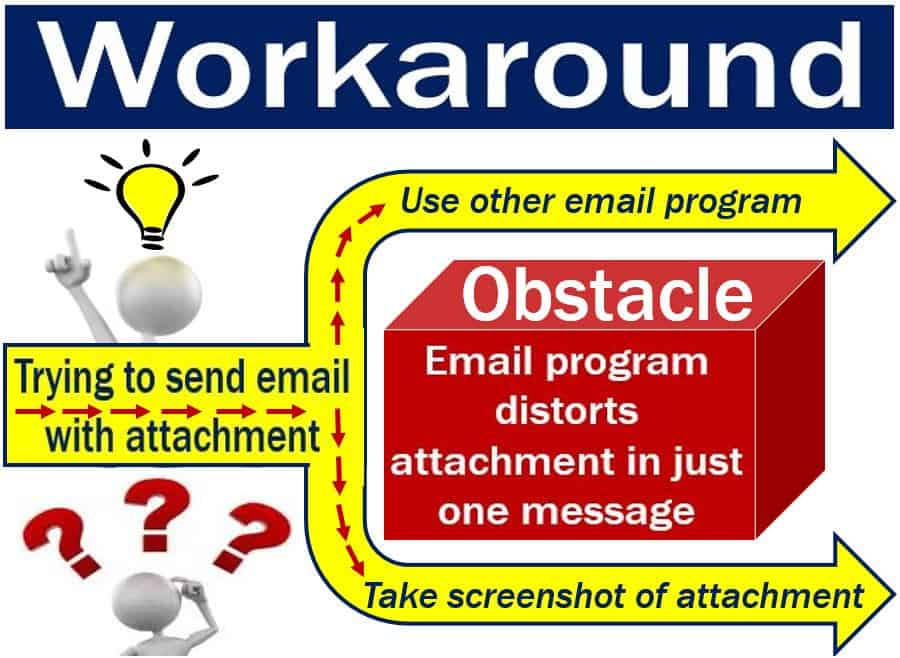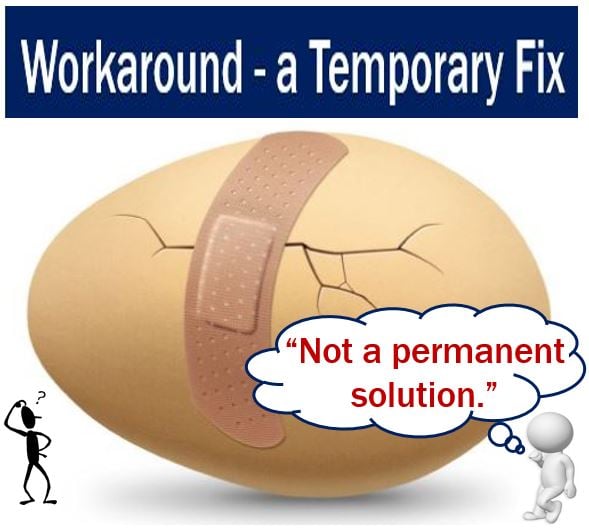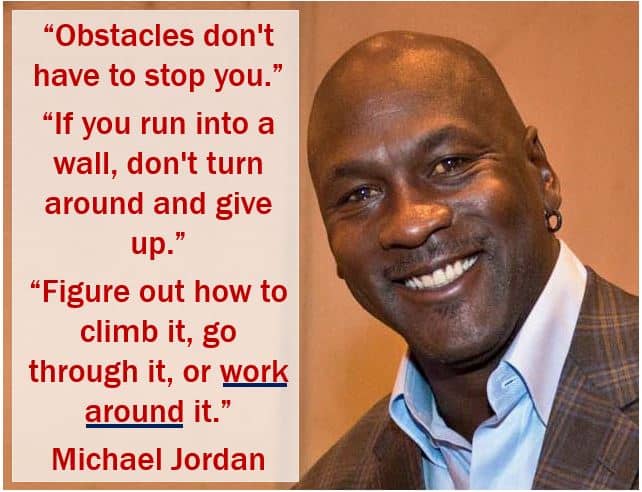A workaround is a method for achieving a goal or successfully carrying out a task when the traditional or planned method does not appear to be working. A workaround is usually a temporary strategy. It is a bypass of a recognized problem in a system; a temporary fix that implies that a unique solution to the problem is required.
Often the workaround needs to be addressed at a later date – it is just a **band-aid solution. Whoever implemented the workaround needs to flag the change so that a proper solution is implemented later.
** A band-aid solution is a temporary one that typically does not deal with the cause (root) of the problem.
Troubleshooters say that for workarounds to be created, you need to ‘think outside the box’ – they are often as creative as true solutions.
The term is used in many sectors of the economy, including IT (information technology), where it is a common method used to overcome a communication, software, or hardware problem.
In the vast majority of cases, after the problem is successfully dealt with, the workaround is put aside and future procedures are addressed in the traditional way.

Example of a workaround
When you send a file attached to an email, it may be altered or distorted by the operating system at the origin, programs, the destination, or some point in between, so that the receiver of the message at the other end gets a deteriorated file.
Ways to address that problem could be to use a different email program just for that message with the attachment, or take a screenshot (photograph) of the document or file contents and send it as an attached image – these are two examples of workarounds.
They are temporary solutions – the sender will not use the other email program or take a screenshot every time there is an attachment.

Workarounds in health care
Physicians and nurses commonly use workarounds to temporarily ‘fix’ perceived workflow hindrances to achieve a goal more readily.
In an article published in BioMed Central in 2013, titled – ‘Nurses’ workarounds in acute healthcare settings: a scoping review the authors’ – the researchers wrote that they enable, but potentially compromise, the execution of patient care.
In some cases, a workaround may be deemed necessary to the proper and successful implementation of patient care, while in others they were found to be counterproductive.
In an Abstract preceding the article, the authors, from the University of New South Wales and the University of Sydney, both in Australia, wrote:
“Workarounds have individual and cooperative characteristics. Few studies examine nurses’ individual and collective conceptualization and rationalization of workarounds or measure their impact.”
“The importance of displaying competency (image management), collegiality and organizational and cultural norms play a role in nurses’ use of workarounds.”

